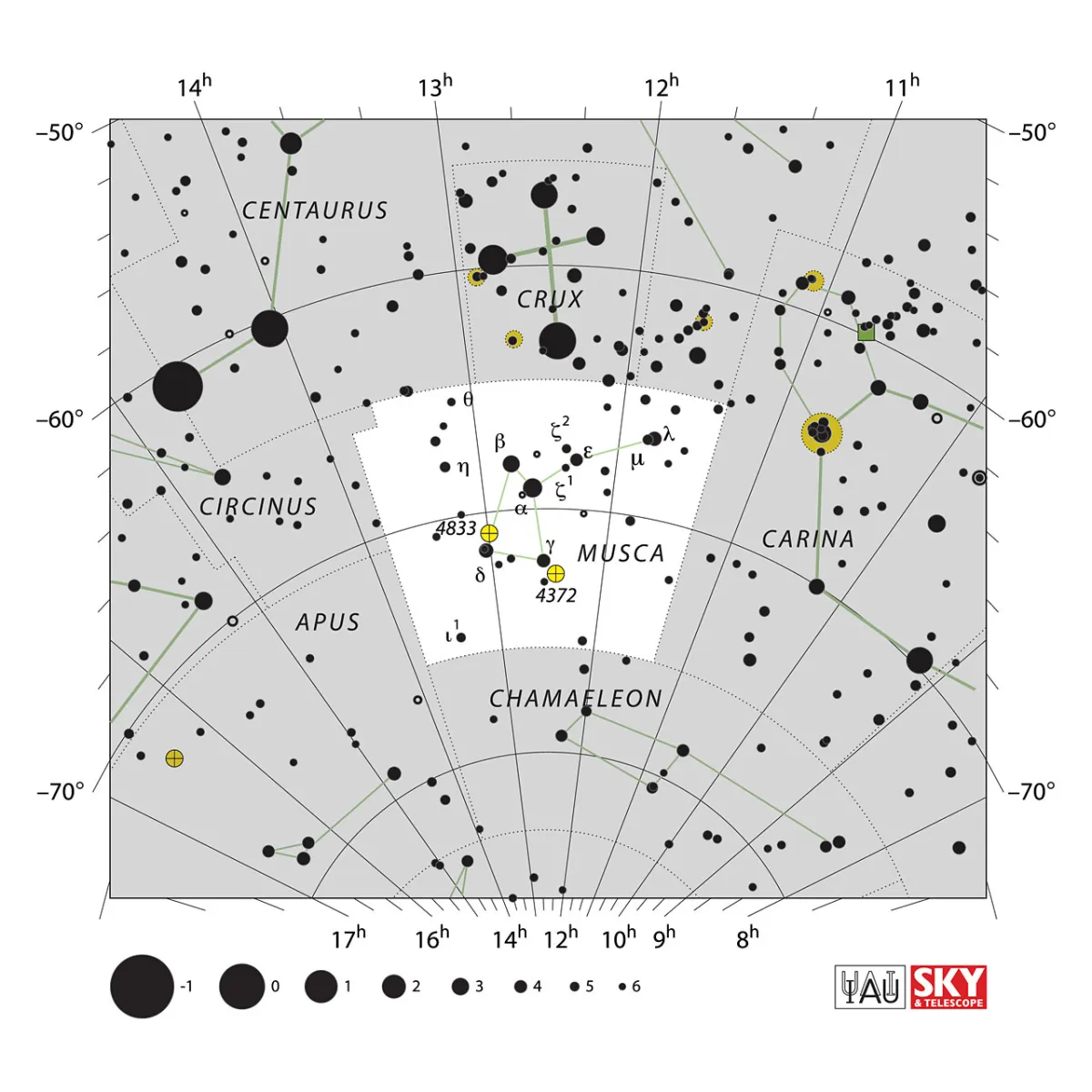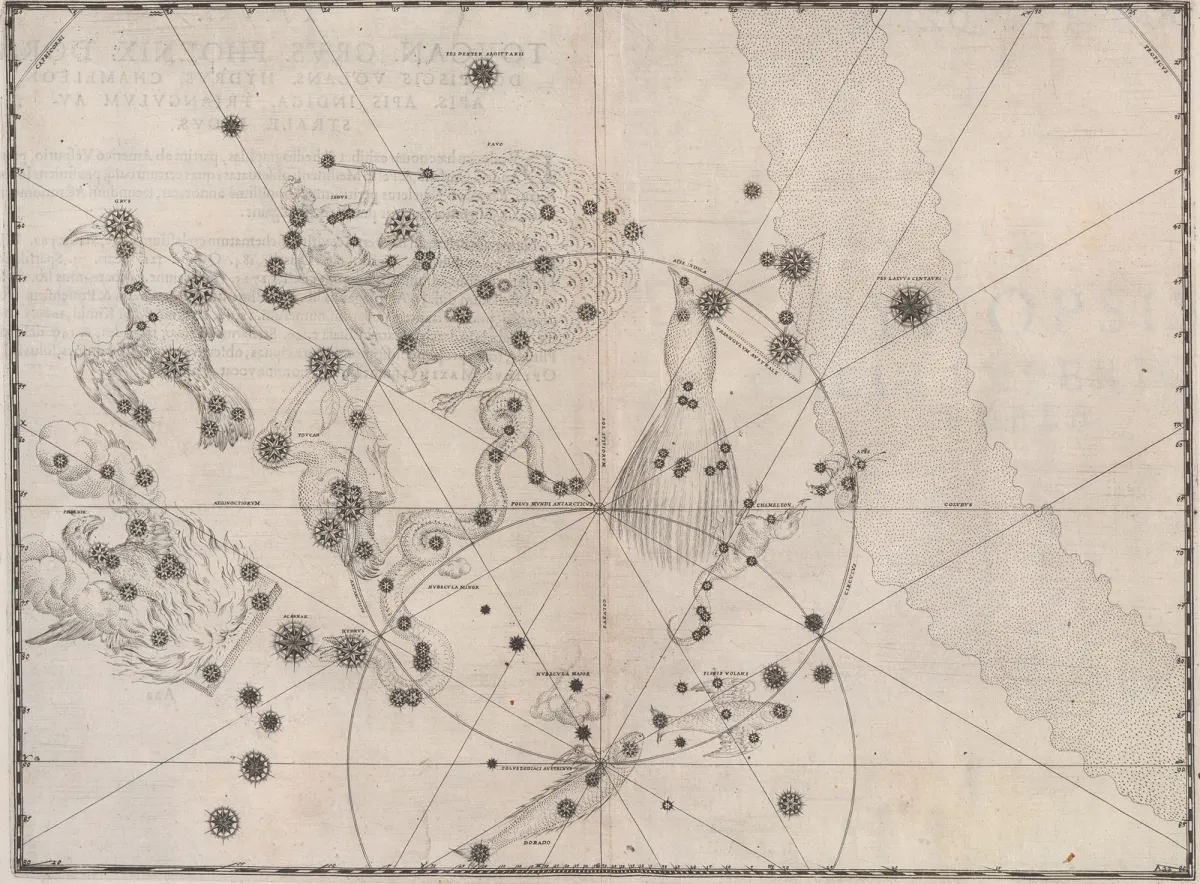Constellation Musca (Fly)

Properties
Musca is a small constellation with 138 square degrees in the band of the Milky Way. It connects to Crux to the south and shares with it a piece of the dark cloud Coal Sack. The centre of the constellation culminates around midnight on March 31st. [9, 15]
| IAU Name | Musca |
| IAU Genitive | Muscae |
| IAU Abbr. | Mus |
| English Name | Fly |
| Culmination at local midnight | 29 March |
| Season (Latitude +0.0°) | December … August |
| Right Ascension (J2000.0) | 11h 19m 26s … 13h 51m 08s |
| Declination (J2000.0) | -75° 41' 02" … -64° 38' 17" |
| Area | 138 deg2 |
| Neighbours (N↻) | Cru, Cen, Car, Cha, Aps, Cir |
Deep-Sky Object Descriptions
Catalogues

History
The constellation Musca goes back to Johann Bayer, who in 1603 separated a piece from the ancient constellation Centaurus and renamed it Apis (the Bee). Jakob Bartsch is said to have renamed the constellation Musca later. [7, 21]